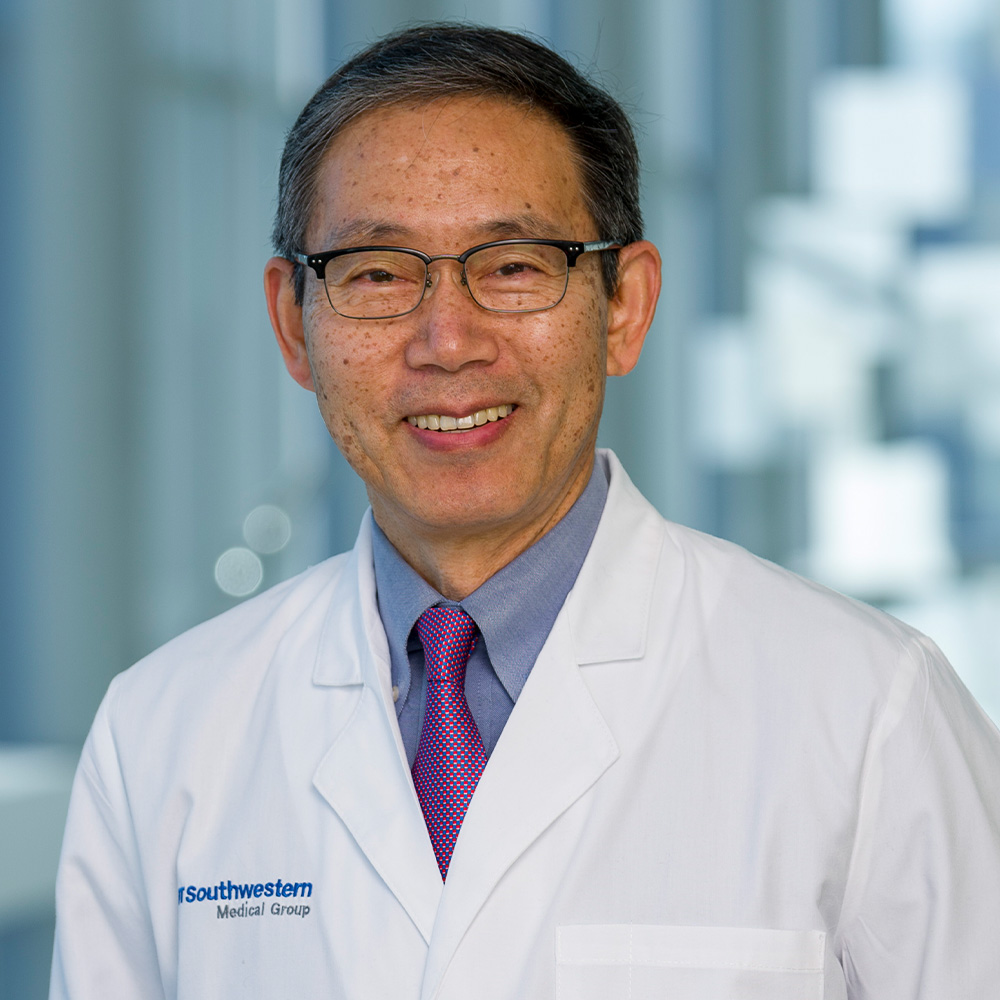Patients with family history of age-related macular degeneration should be screened by 55

DALLAS – March 21, 2023 – Patients with a family history of age-related macular degeneration (AMD), the leading cause of permanent vision loss in those older than 60, should visit an ophthalmologist by age 55 to be screened for signs of the disease, advises an expert at UT Southwestern Medical Center.

Yu-Guang He, M.D., Professor in the Department of Ophthalmology and Director of UTSW’s Vitreoretinal Fellowship Program, also recommends AMD testing for older patients who experience symptoms including fuzzy, blurry, or distorted vision such as seeing lines as wavy instead of straight or colors more faded or dull than before.
Early forms of AMD, which affect up to 1 in 10 patients ages 50 and older in the U.S., damage the macula, the millimeterwide center of the retina at the back of the eye. Common risk factors include smoking, poor nutrition, genetics, and Caucasian ancestry. AMD often makes it difficult for patients to drive, read, write, see others’ faces, and do household chores.
When patients first develop the condition, it is classified as dry AMD, which accounts for 90% of cases. If the condition progresses with bleeding, swelling, and fluid buildup, symptoms can worsen dramatically, and this is called wet AMD.
Although there is no cure for AMD, patients can receive care to slow vision loss, said Dr. He, part of UT Southwestern’s Macular Degeneration Program. Those whose condition has progressed to wet AMD can receive advanced treatments, including intraocular injection of targeted medications to block abnormal blood vessel growth, as well as photodynamic therapy. Wet AMD often can revert to dry AMD with effective treatment, making the condition easier for patients to manage. There are also new therapies on the horizon for dry AMD.
From 2006 to 2012, UT Southwestern ophthalmologists took part in the second phase of the Age-Related Eye Diseases Study (AREDS2) of more than 4,200 patients who were treated with a vitamin formula containing antioxidants and zinc, a fish oil formula, or a placebo.
The physicians learned that the vitamin formula, called AREDS2, slowed degeneration by about 25%. UTSW ophthalmologists often recommend that patients diagnosed with dry AMD take AREDS2 twice a day, Dr. He said.
Dr. He said patients can reduce their AMD risk by not smoking and avoiding cigarette smoke, because nicotine can cause blood vessels in the eyes to shrink, speeding degeneration. He also recommended eating foods such as berries, apples, carrots, and leafy green vegetables including spinach because they have nutrients that boost eye health.
Dr. He holds the Zora Meagher Macular Degeneration Research Professorship and the Josephine Long Biddle Chair in Age-Related Macular Degeneration Research.
About UT Southwestern Medical Center
UT Southwestern, one of the nation’s premier academic medical centers, integrates pioneering biomedical research with exceptional clinical care and education. The institution’s faculty has received six Nobel Prizes, and includes 24 members of the National Academy of Sciences, 18 members of the National Academy of Medicine, and 14 Howard Hughes Medical Institute Investigators. The full-time faculty of more than 2,900 is responsible for groundbreaking medical advances and is committed to translating science-driven research quickly to new clinical treatments. UT Southwestern physicians provide care in more than 80 specialties to more than 100,000 hospitalized patients, more than 360,000 emergency room cases, and oversee nearly 4 million outpatient visits a year.
